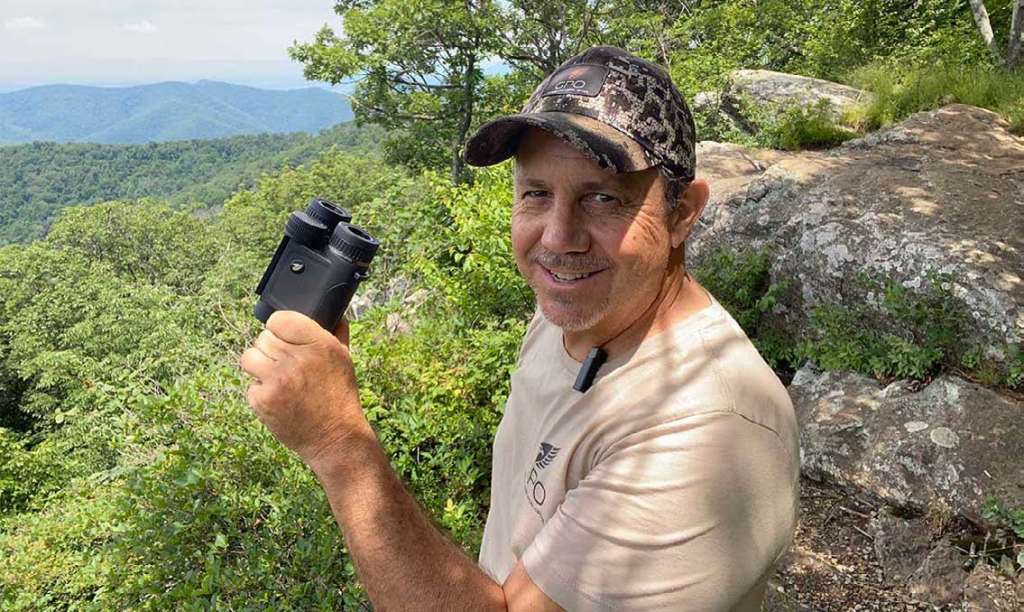One of the biggest game changers for hunters that I have seen in recent years is the invention of rangefinders. Many a hunter, including myself, has misjudged the distance of a deer, antelope, elk or moose and ended up shooting overtop or underneath an animal that was in our effective shooting range. We have also passed up animals that we thought were outside of our effective range, even though they were well within that range. And, just as well, we have shot at animals that we thought were in our effective range but were well beyond that.
In the early years, I remember pacing out various distances to trees, bushes, rocks and other landmarks so I knew how close an animal would be to my blind or tree stand. While that did work, it came with consequences, such as leaving my scent in the area where I wanted my target animal to stop or walk through. In addition, doing so was not an option on a spot-and-stalk hunt and it was still a matter of guessing the distance on those hunts.
When some of the best rangefinders for hunting started to become available, they were big and bulky units. Because they helped us hunters dial in the range, we started using them faithfully. For many of us, we started to become more successful on our shots as there was no more guessing the distance. Over time, the units became smaller and smaller, making them easier to use and carry. They also became more accurate out to longer distances, so we could also use them during muzzleloader or rifle seasons. Even though the units started to become smaller in size, the problem remained of having too many things around our necks. While the early units could tell us distances, they didn’t provide much magnification. Because of that, I, along with many other hunters, also carried binoculars and rangefinders around our necks as we went afield. Often the two optics would bump and clunk together or hit on our bows and make every critter for miles know something wasn’t right. Plus, there was always the risk of damaging the optics or getting the neck straps twisted to the point that you couldn’t use either one. If you added a grunt tube or an elk bugle into the mix, it wasn’t a question of if your gear would get tangled, it was just about when it would get tangled.
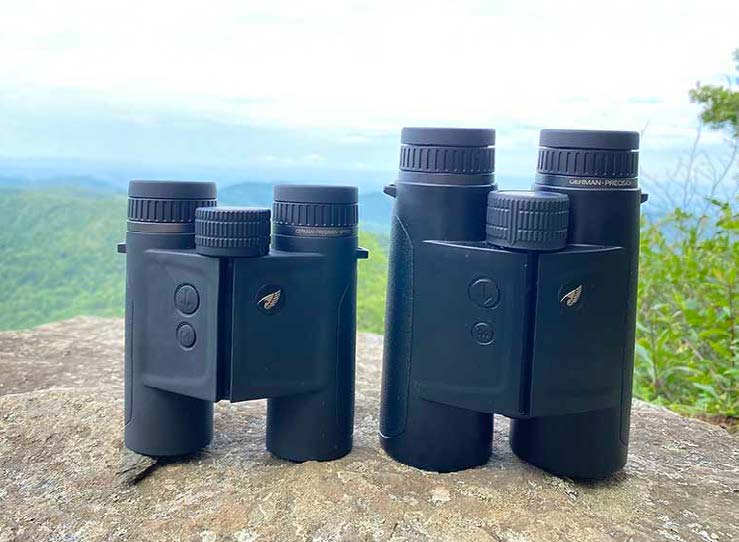
Becoming Two-in-One
It wasn’t too many years ago when the technology incorporating a range finder into a binocular unit started to become a reality. The only problem with those early units is that they were very expensive, and it seemed only the wealthiest or hardest of hardcore hunters were buying them.
In more recent years, the pricing of these rangefinding binocular units has become much more affordable. However, since they are basically two units in one, the pricing is still much higher than a pair of binoculars or a rangefinder alone. It’s important to note that the price of one range-finding binoculars is less expensive than buying a set of binoculars and a range finder separately.
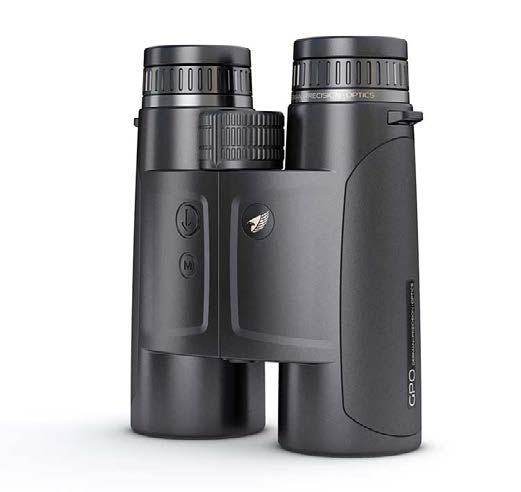
Are They Worth It?
Given that pricing of these units is becoming more and more affordable and there are multiple companies making these units, the question is, are these units really worth buying and using?
My answer to this question is a definite yes! This is because the concept of one unit that magnifies an object and tells you instantly how far away that object is truly is a game-changer. It takes all the guesswork out of range assessment and helps us make better and more ethical shots. Those factors make having one of these units a definite must on the want/need list.
A single-unit rangefinding binocular is much more convenient than carrying a separate pair of binoculars and a range finder. Gone are the days of optics banging into each other, twisted neck straps, or having one or the other unit in a pocket or backpack when you really need it. Now when traveling to hunt, one unit takes up less room than two units did before, and that might allow you to take an extra item or two (especially if flying and weight is critical). In addition, you will appreciate carrying less weight if you are on a long stalk or are walking all day.
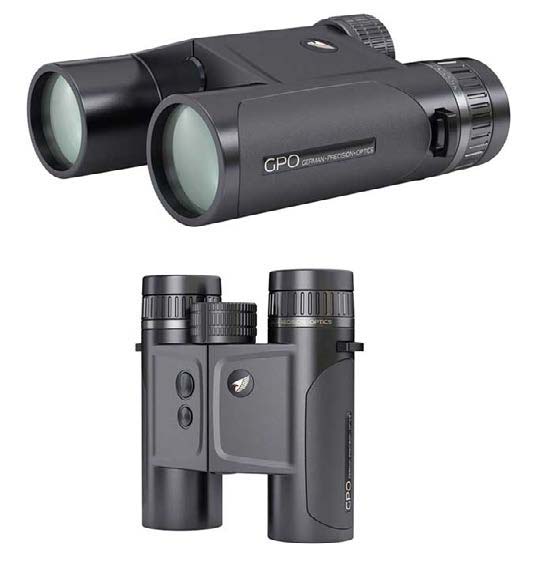
Say It Isn’t So
Some say that using a range finder ruins our ability to estimate distances. From experience, I have found this to be the complete opposite. While using the rangefinding binoculars to look at the countryside, objects around my blinds, or big game animals, I always try to estimate the distance in my head before pushing the rangefinding button. The more I do this, the better my ability to estimate distance has become. This is important because there will be times when an animal will just appear, and there won’t be time to range it. Instead, you can act on your instincts to estimate the distance knowing all those previous rangefinding shots have helped train you for the moment at hand.
A set of rangefinding binoculars comes in handy when there are lots of branches, twigs and other objects such as fence posts or barbed-wire fencing in close proximity to the animal you are after. Once you know the distance, you can quickly scan the area with the binocular feature for “things” that may deflect your arrow that you might not be able to see with just your eyes. If you spot something, you can wait for your target animal to move.
While making a stalk on a bedded animal, a set of rangefinding binoculars can help you pick the path of least resistance. You can use the binocular feature to look for more grassy areas to crawl through, for low spots, or even see taller rocks, trees or weeds to help you stay hidden. As you slowly move along, take distance readings. Once inside your effective shooting range, you can stop the stalk and make the shot—as opposed to trying to get closer and potentially spooking the target animal by accidentally breaking a twig or getting winded.
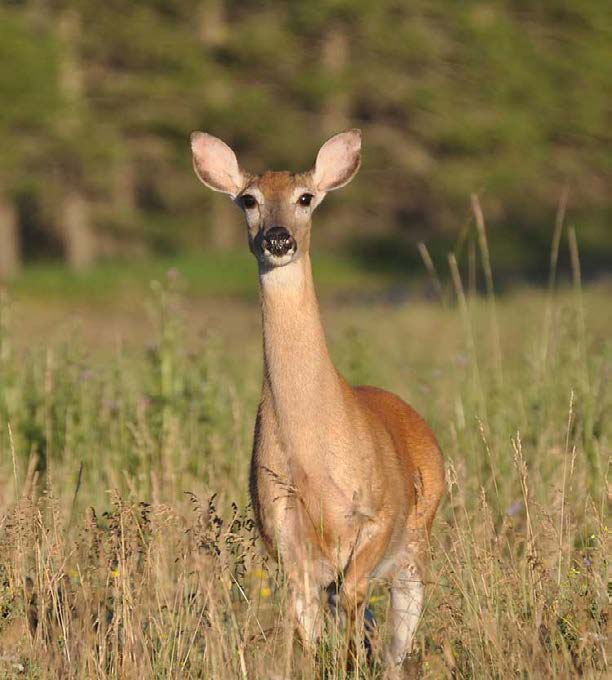
Hunt Prep Use
A set of rangefinding binoculars can also help you prep for a hunt. For example, you could go to a 3-D range when the site is not holding a competition and pretend to be out hunting. Use the one of the best binoculars to hone in on the target’s vitals, and the rangefinder to learn the distance. I know this isn’t allowed in most 3-D shoots, but this type of practice really isn’t for 3-D competitions; it’s actual hunting practice.
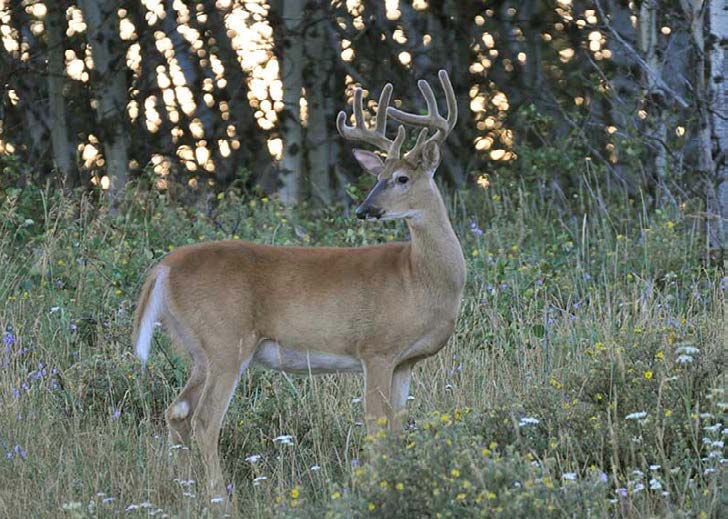
Gopher Glassing
Another fun way to get afield and use all your bow hunting gear is to go to a farmer’s pasture and glass for gophers. Once you spot them, move in closer, range them, then let a Judo Point tipped arrow go. If there are no gophers around, simply pick out some various spots on the ground (such as leaves, acorns or twigs) and let those Judo Points fly. While doing so, make sure the Judo Points are of similar weight to the broad heads you plan to use on big-game animals.
If you’re still unsure, imagine sitting in your ground blind waiting for your target buck to come to a watering hole. As the daylight slowly fades, there are more and more shadows in the brush behind the watering hole.
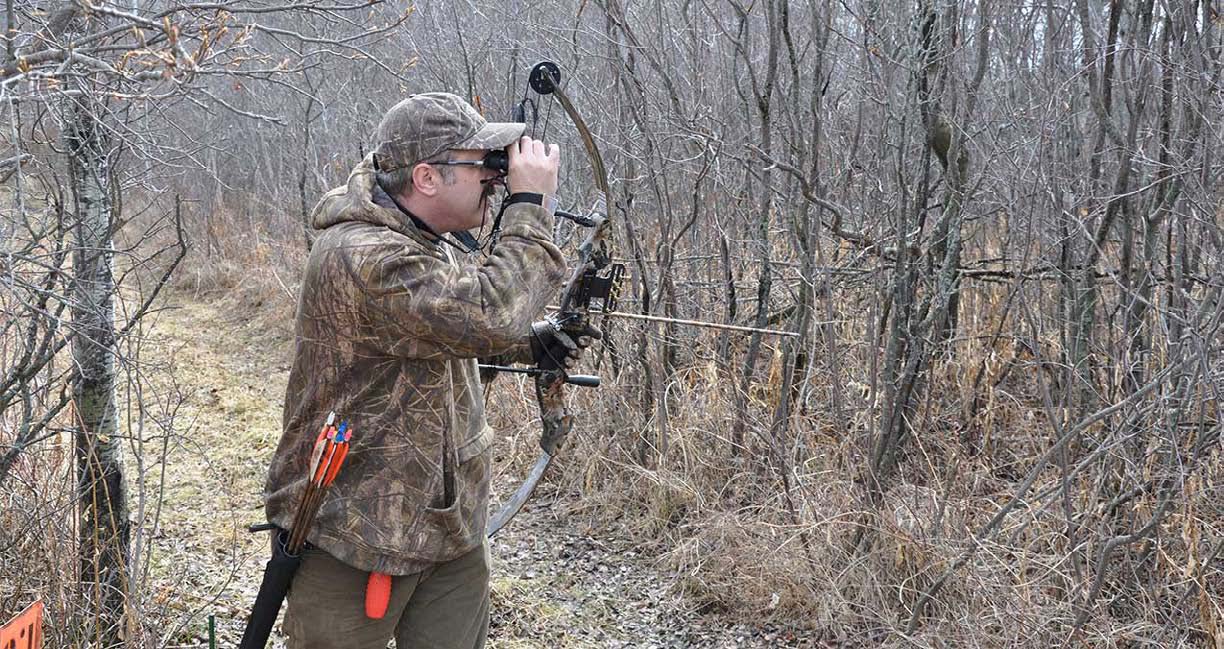
Something suddenly off to the right moved…or did it? This is definitely not the direction you anticipated any deer to come in since there isn’t really a trail off to that side. However, that sure looked like the twitch of a deer’s ear. So, with one smooth motion, you slowly lift your rangefinding binoculars to your eyes and glare deep into the shadows, and with 10-power magnification, start scanning the area. Branch, branch, shadow…antler. Big antler! Lots of points! As you look closer at the antler tines, you realize it’s your target buck.
Panic sets in as you had no inclination that any deer, let alone your target buck, would come in off to the right. You have no idea how far away he is standing. Then, you breathe easy, because without moving anything but your index finger, you push the rangefinding button and determine the buck is 37 yards away. As soon as he steps into the open, he will be 35 yards out, and well within your effective shooting range.
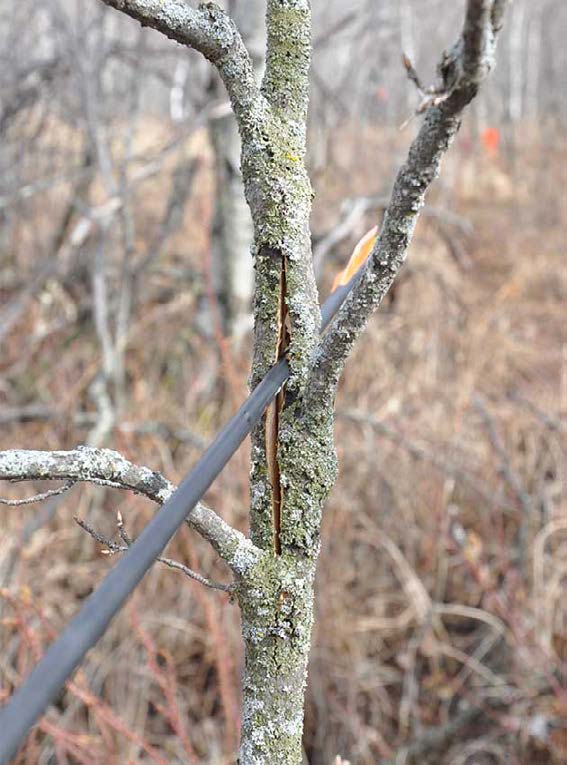
Many Makers
There are currently a number of companies now making rangefinding binoculars. One of those companies is German Precision Optics (or GPO), a relatively new optics company. Their rangefinding binoculars are called RangeGuide, and are available in 8 x 50, 10 x 50, 8 x 32 and 10 x 32 models. These models are sold in North America by GPO USA Optics.
GPO USA was formed in 2016. While the company is new, the folks involved in forming this business bring lots of experience to the table. GPO USA was formed by Mike Jenson, who was previously the president of Zeiss Sports Optics. GPO USA works in tandem with GPO GmbH, a Germany-based company led by Richard Schmidt, who was previously CEO of global Zeiss Sports Optics GmbH in Germany.
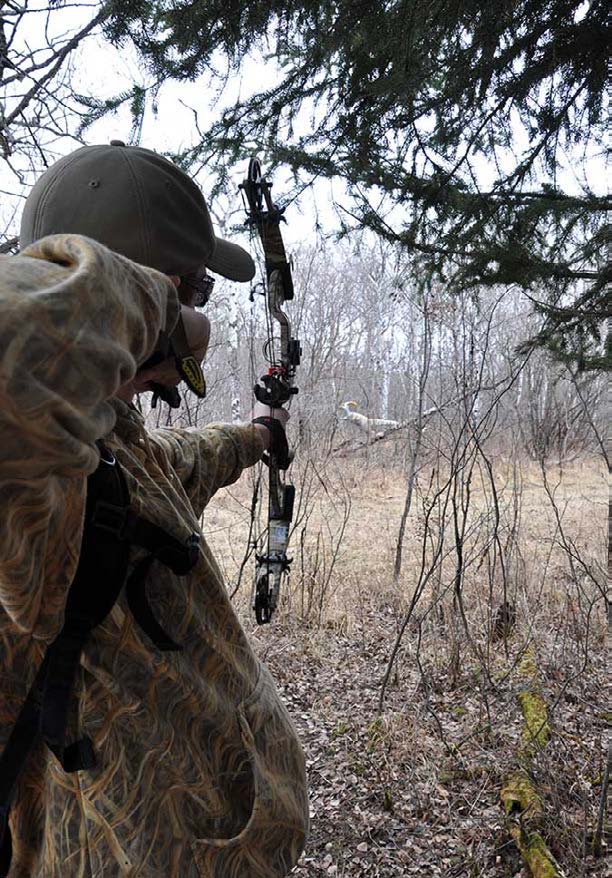
This new arrangement was created on the premise that design, engineering and quality management of their optics is 100 percent controlled in Germany to their strictest standards, yet the products can be produced at some of the largest production facilities around the world. This unique corporate structure allows GPO to offer the highest quality products with better features at a significantly better price point than optics of similar quality from other manufacturers.
The company says it is 100 percent confident that all of its products, including the RangeGuide rangefinding binoculars, will not only function perfectly but will exceed all expectations. GPO has created an industry- leading Spectacular Lifetime Warranty™ that will repair or replace any unit that is not working.
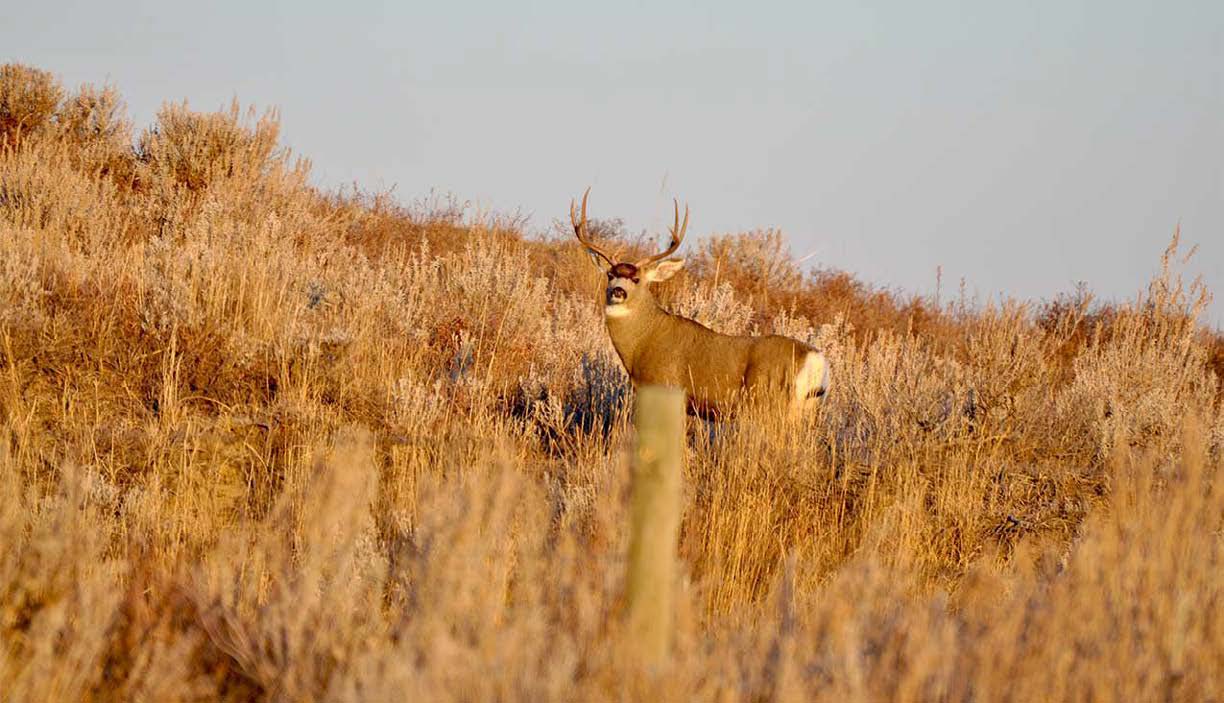
Many Unique Features
All RangeGuide models feature several unique and functional features. These units utilize True Range Angle Technology, which calculates the proper distance and angle to the target. This is great when hunting from high treestands because it allows you to use the proper sight pin to make a clean and ethical shot.
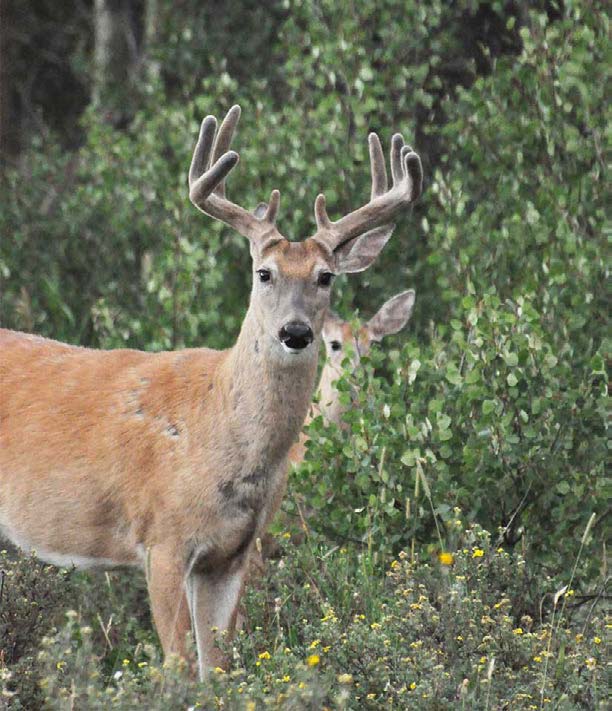
This features Scan Mode, which provides three readings per second and allows you to easily track the progress of an animal closing the distance, such as when a bull elk is coming to look for a fight. The OLED display on these units features nine brightness settings that allow you to see your distance readings in all conditions from low-light situations to bright sunny afternoons.
The Double HD Gladd GPO bright lens coating technology results in razor-sharp images even in the lowest of light conditions to help you see and identify animals. Each unit is waterproof and fog-proof, allowing you to hunt in the nastiest of weather conditions while still having reliable optics when the moment of truth presents. Additionally, each unit is covered with GPO’s PASSIONdrop hydrophobic coating, which makes these units very rugged. The coating protects them from bumps, drops, scraping, and so other situations that can occur when in the field hunting. In addition, each unit comes with a neoprene neck strap, microfiber cleaning cloth, hard case and battery.
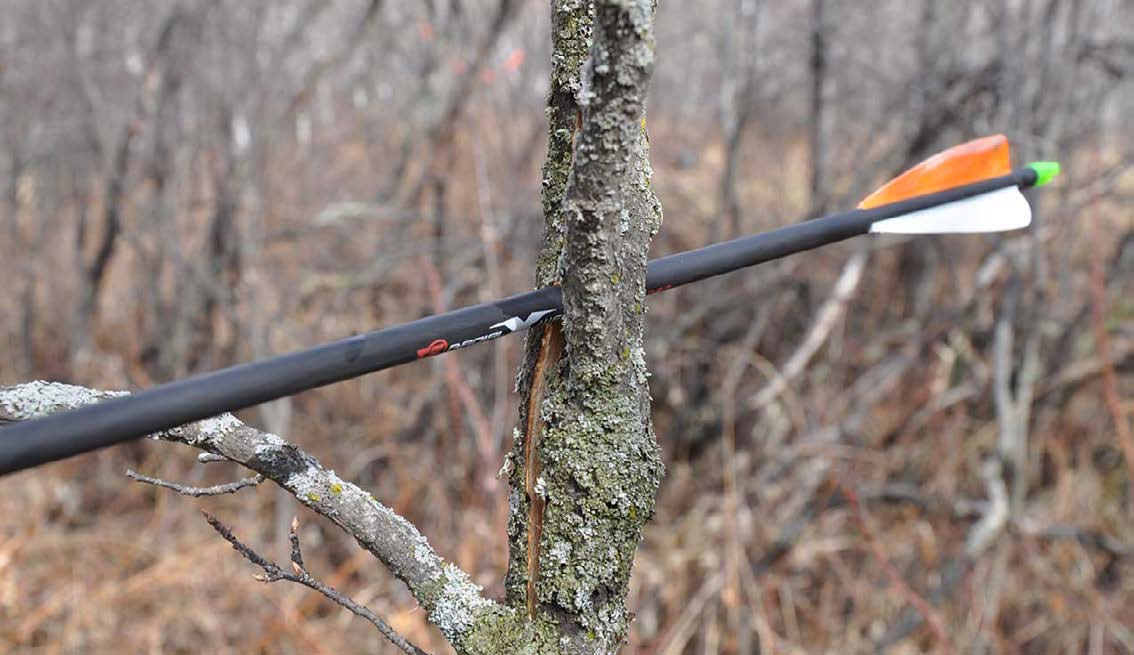
Compact Size
What is really intriguing about these units is their compact size. The 10 x 50 model stands just 6.3 inches tall and tips the scale at a meager 35 ounces due to its magnesium frame, making it not much bigger or heavier than a regular 10 x 50 pair of binoculars. But don’t let the small size fool you. These units live up to their 22.36 twilight factor, giving crisp and clear views in low light and hazy conditions, along with accurate distant readings at the same time.
The compact RangeGuide features an eye-safe Class 1 laser for instant readings The field of view is 330 feet at 1,000 yards, and eye relief is 17mm. The RangeGuide also features diopter focus adjustments on both left and right sides so they can be adjusted to your personal settings. They utilize GPO’s premium cut-brass geared-focus wheel system for a very tight, consistent turning radius without any free play.
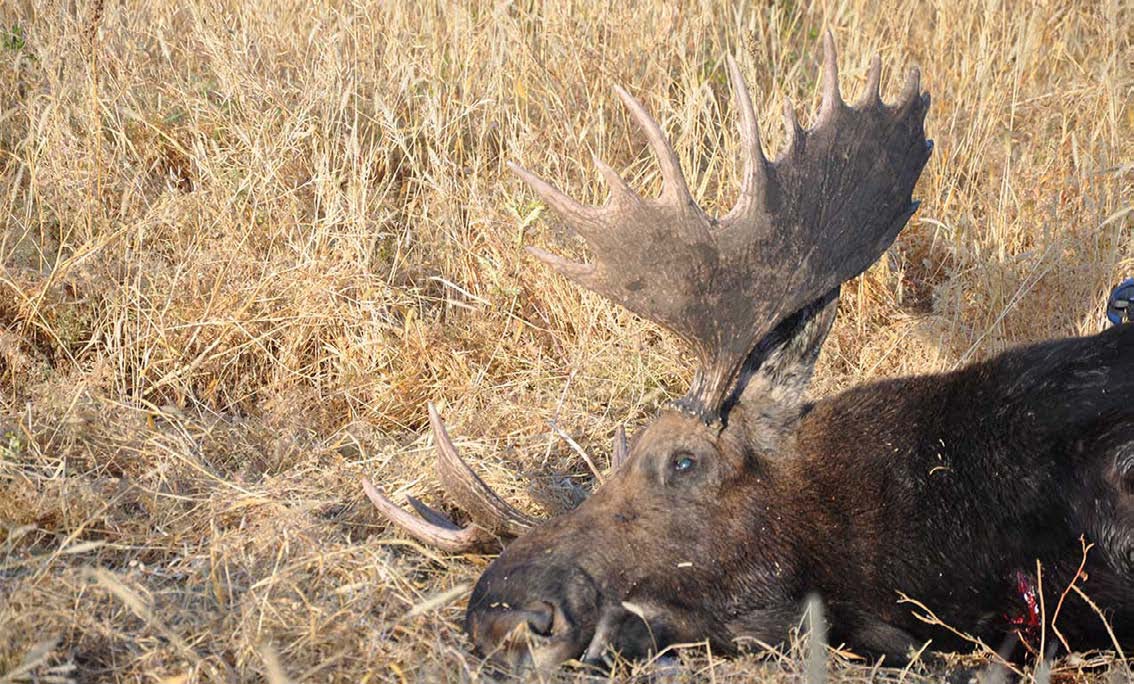
These units are extremely quick at picking up a range distance. While advertising materials for these range finders state that these units will give distance readings up to 3,000 yards, it is important to note that in those cases, the target must be a large reflective item. In testing these units we were able to reliably range trees to almost 1,100 yards and deer to as much as 750 yards.
Since I started using a set of rangefinding binoculars, I have found them to be a real game changer. So, if you’ve been thinking about purchasing a set for yourself, I highly recommend doing so. Then, you can see what I’ve been seeing!
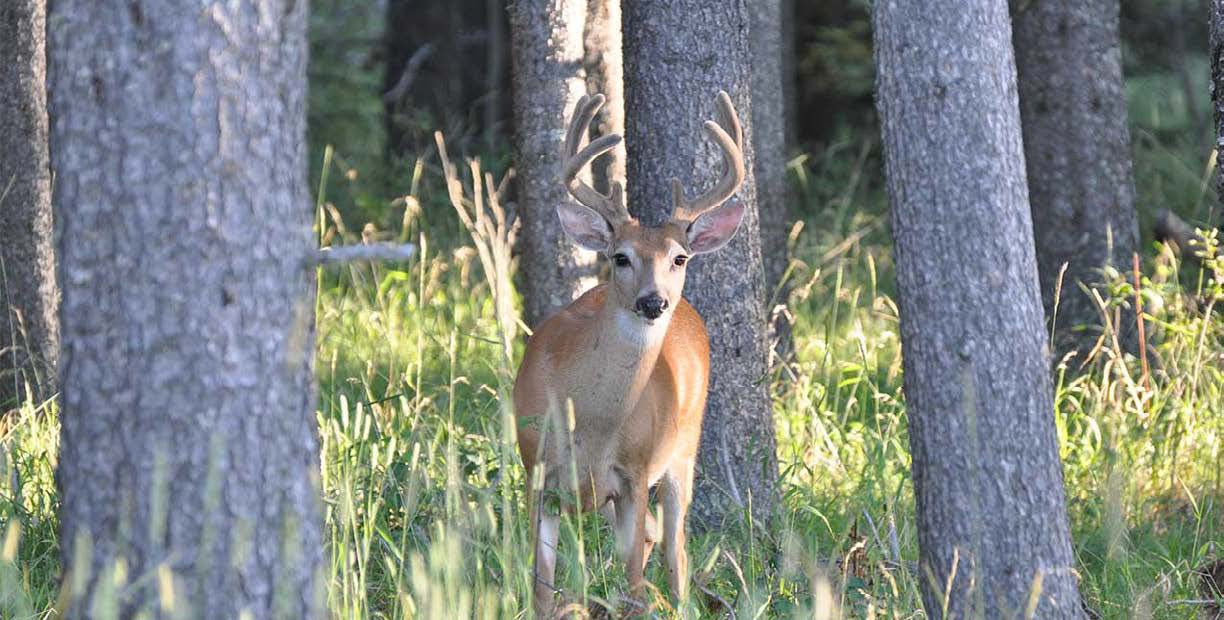
Per our affiliate disclosure, we may earn revenue from the products available on this page.





